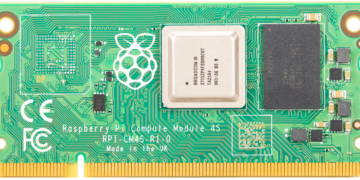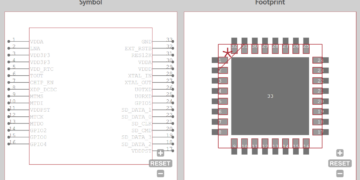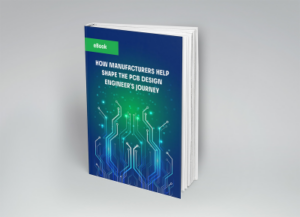
Hard to find capacitors often require alternative component selection
Engineers often face pressure to deliver functional PCB designs on schedule, but sourcing the right components can derail even the best-laid plans. Among the most common pain points are hard to find capacitors. These parts are frequently backordered, discontinued without warning, or prioritized for high-demand sectors such as automotive and consumer electronics.
Whether the issue is a 10μF MLCC that suddenly goes out of stock or a tantalum capacitor marked end-of-life midway through a project, these disruptions affect layout decisions, component validation, and production timelines. Understanding why certain components are difficult to source, how to identify reliable replacements, and what strategies can be applied during design is essential for keeping projects on track and avoiding costly delays.
Sourcing Hard to Find Capacitors in Today’s Supply Chain
While nearly every PCB design relies on capacitors for timing, filtering, or power stability, not all capacitors are equally available. Some capacitor categories, especially those with specific voltage ratings, temperature coefficients, or case sizes, are far more prone to stockouts or long lead times. Understanding which types are most affected helps engineers make smarter decisions during part selection.
The table below outlines capacitor categories that frequently appear on allocation or get discontinued altogether, along with the design constraints they introduce:
| Common Categories of Hard to Find Capacitors | ||
| Capacitor Type | Common Use | Why It’s Hard to Source |
| 10µF 25V X7R MLCC (0805) |
|
High MLCC demand across mobile and automotive sectors |
| High-voltage MLCCs (>100V) |
|
Low volume production and fewer vendors |
| Tantalum (e.g., KEMET T491) |
|
Tantalum sourcing constraints and stricter export classifications |
| C0G/NP0 Ceramic Capacitors |
|
Tight tolerances, limited substitutes, low supply diversity |
| Automotive-grade MLCCs (AEC-Q200) |
|
Long qualification cycles and vendor prioritization for Tier 1 OEMs (Original Equipment Manufacturers) |
These capacitor families are important in high-performance or tightly constrained designs, but since they are hard to replace one-to-one, you need a methodical approach to sourcing viable alternatives.
How to Source Reliable Replacement Capacitors
When a capacitor becomes unavailable, whether during prototyping or in the middle of production, you cannot simply drop in the next part with a similar label. Capacitors play a direct role in voltage regulation, signal integrity, and timing stability. Even minor differences in electrical or physical characteristics can lead to circuit failure, especially in sensitive designs like switch-mode power supplies or analog filters.
Selecting a reliable replacement capacitor starts with identifying which specifications must match and which can be adjusted safely. The most critical factors to consider include:
- Capacitance and tolerance: Capacitance must match exactly. Tolerance can sometimes vary slightly, but only if the circuit allows for it.
- Voltage rating: Choose a replacement with an equal or higher voltage rating than the original to ensure reliability under load.
- Dielectric type and temperature coefficient: Maintain the same dielectric family, such as C0G for stable RF behavior or X7R for general-purpose use, to prevent unexpected thermal drift or frequency instability.
- Equivalent Series Resistance (ESR): This value is especially important in power circuits. A mismatch in ESR can cause ripple, noise, or thermal issues that are difficult to debug post-assembly.
- Package footprint and profile: Confirm that the land pattern and height of the replacement part fit your layout and enclosure constraints.
Considering these parameters, the next step is choosing the right tools to filter, compare, and verify potential replacements efficiently.
Tools for Finding Reliable Capacitor Alternatives
Today, sourcing tools and parametric databases give engineers the visibility needed to make these decisions confidently and quickly. These platforms reduce the time spent digging through datasheets and help avoid parts that are already being phased out.
- Ultra Librarian offers verified capacitor models with parametric filters for ESR, voltage, and more.
- Mouser and other distributor search tools let you compare stock, pricing, and datasheet details across multiple manufacturers.
- Octopart and FindChips show stock availability and price breaks across authorized suppliers, giving visibility into the broader market.
Consider a scenario where a 10μF 25V X7R capacitor in an 0805 package has gone out of stock mid-design. Using a distributor parametric search, you can enter the required capacitance, voltage, dielectric type, and package size. From there, filtering by ESR and lifecycle status narrows the list to viable, in-stock replacements.
For instance, if the original part was a Murata GRM21 series capacitor, you might find an equivalent from Samsung Electro-Mechanics or TDK that meets the same electrical specs and footprint.

ECAD libraries integrate component availability data for long-term design decisions.
Designing for Long-Term Component Availability
The most effective way to avoid sourcing issues is to consider availability as a constraint during the design phase itself. This means selecting parts based not only on electrical performance, but also on supply chain stability, lifecycle stage, and package flexibility.
For example, choosing a capacitor that is available in both 0603 and 0805 sizes allows you to design a footprint that supports multiple case options. This gives procurement more flexibility when sourcing begins. Similarly, selecting capacitors with standard voltage ratings and widely used dielectric types, such as 16V X7R MLCCs, makes it easier to locate alternates across multiple suppliers without triggering new validation cycles.

PCB layouts must accommodate multiple capacitor packages for long-term availability
Hard to find capacitors continue to impact PCB development, especially when project schedules depend on consistent part availability. However, by recognizing which capacitor types are most at risk and planning for flexibility during component selection, you can reduce delays and keep designs on track in an unpredictable supply environment.
If you’re looking for CAD models for common components or important design information about hard to find capacitors, Ultra Librarian helps by compiling all your sourcing and CAD information in one place.
Working with Ultra Librarian sets up your team for success to ensure streamlined and error-free design, production, and sourcing. Register today for free.








